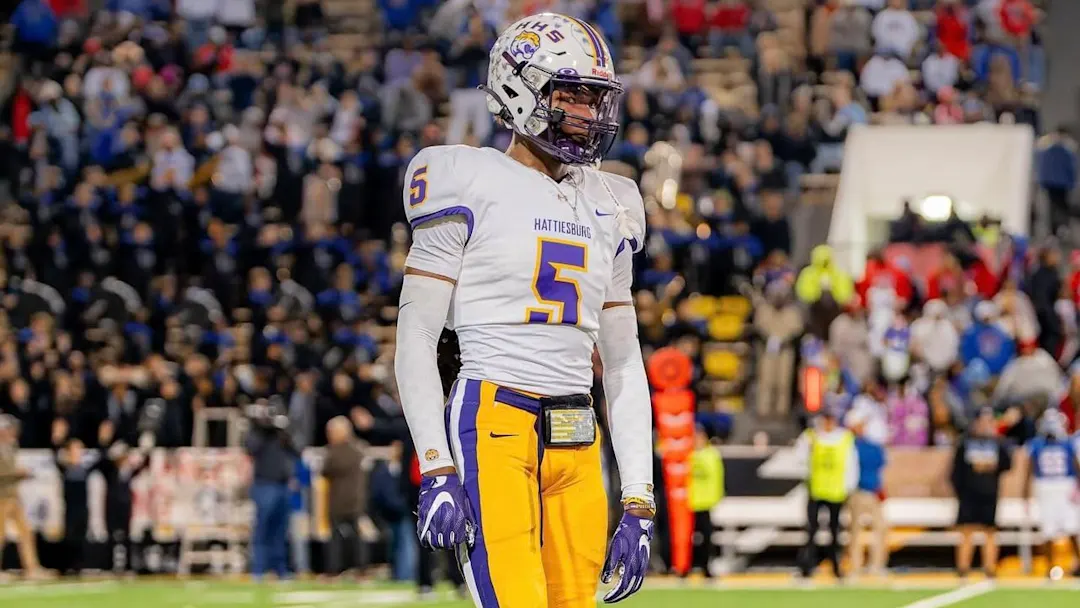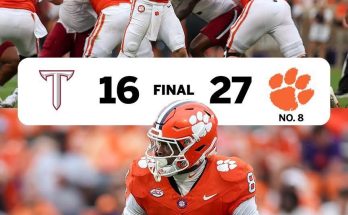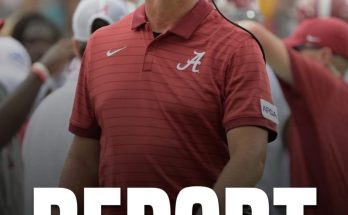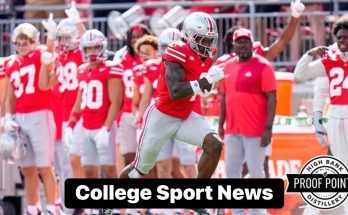NO: LSU Football Holds Commitments From a Pair of Top-10 Wide Receivers in America
The college football landscape is shifting, and few programs are making waves like the LSU Tigers. Under the direction of head coach Brian Kelly, LSU is establishing itself not only as a powerhouse in the SEC but also as a national recruiting juggernaut. The most recent proof? LSU currently holds commitments from two of the top-10 wide receivers in the Class of 2025—a move that has sent shockwaves through recruiting circles and drawn admiration (and envy) from rival programs.
The duo in question? Five-star phenom Jaylen Jenkins from California and electrifying playmaker Malik Ricks out of Georgia. Both are ranked inside the top-10 nationally at their position, and both have the tools to make an instant impact in Baton Rouge.
At 6-foot-2 and 190 pounds, Jaylen Jenkins is the prototype modern wideout. Smooth, explosive, and technically polished, Jenkins has drawn comparisons to NFL stars like Justin Jefferson and CeeDee Lamb. Hailing from Mater Dei High School—a national powerhouse in Santa Ana, California—Jenkins dominated elite competition and turned heads with his route running, hands, and breakaway speed.
Recruiting insiders long believed USC and Oregon would have the inside track on Jenkins, but LSU’s relentless effort, particularly from wide receivers coach Cortez Hankton, turned the tide. Jenkins visited Baton Rouge twice in 2024 and cited the Tigers’ “NFL-level receiver development” as a major factor in his commitment.
“I want to be coached hard and be ready for the league,” Jenkins said. “Coach Hankton and Coach Kelly showed me a plan that works. Look at the guys they put in the league. LSU is Wide Receiver U.”
While Jenkins brings the West Coast flavor, Malik Ricks is Southern-born and SEC-tested. The 6-foot, 185-pound receiver out of Buford High School in Georgia is known for his elite quickness, yards-after-catch ability, and football IQ.
Ricks, ranked as the No. 7 wide receiver in the nation by 247Sports, chose LSU over heavyweights like Georgia, Alabama, and Florida State. His decision shocked many who assumed the Peach State product would remain closer to home.
“LSU felt like home the minute I stepped on campus,” Ricks said. “They treat players like family, but they also push you to be great. I want to compete in the SEC and be part of something special.”
When Brian Kelly took over at LSU in late 2021, critics questioned whether the longtime Notre Dame coach could adapt to the SEC’s fast-paced, high-pressure recruiting game. Just three years later, Kelly has not only adapted—he’s thriving.
This haul of top-tier receivers, paired with recent blue-chip commitments at quarterback and offensive line, speaks volumes about Kelly’s evolution as a recruiter. He has modernized his approach, embraced NIL realities, and leaned heavily on a top-tier staff of assistants with deep Southern roots.
Coach Hankton, in particular, has been instrumental in reshaping LSU’s wide receiver room. A former Georgia assistant, Hankton has built strong pipelines in talent-rich states like Georgia, Texas, and Florida. His role in landing both Jenkins and Ricks cannot be overstated.
When Jenkins cited LSU as “Wide Receiver U,” he wasn’t exaggerating. Over the past decade, LSU has churned out one elite wideout after another: Odell Beckham Jr., Jarvis Landry, DJ Chark, Justin Jefferson, Ja’Marr Chase—the list goes on. Few programs can claim that level of consistency and stardom at the position.
The 2019 national title team, led by Joe Burrow and bolstered by Jefferson and Chase, remains a recruiting tool in itself. Young receivers have watched LSU wideouts torch college defenses and then thrive on Sundays. Jenkins and Ricks are eager to follow that same path.
So how do Jenkins and Ricks fit into LSU’s offensive future?
LSU has quietly stockpiled talent at the quarterback position, including five-star signal-caller Bryce Underwood, who headlines the 2025 class. Pairing Underwood with two elite receivers creates a future nightmare for SEC defenses. Offensive coordinator Mike Denbrock now has the tools to run a high-octane system reminiscent of LSU’s record-breaking 2019 offense.
Expect Jenkins to be used as a versatile outside receiver capable of stretching the field vertically, while Ricks should thrive in the slot or on quick-hitting screens and option routes. Together, they provide a one-two punch of finesse and physicality that LSU hasn’t had since the Jefferson-Chase era.
When a top-tier player commits, others often follow. With Jenkins and Ricks now in the fold, LSU is in prime position to secure additional offensive stars.
Running backs, quarterbacks, and even offensive linemen often want to play alongside elite receivers. Already, LSU has made strong inroads with five-star running back Jamari Carter and four-star offensive tackle Demarcus Hill, both of whom mentioned LSU’s recent recruiting wins at wideout as “encouraging signs.”
“You want to be part of something great,” Hill said. “When you see guys like Jenkins and Ricks committing, you know the offense is going to be dangerous. That makes it easier to imagine yourself in that uniform.”
Landing two top-10 wideouts in the same class puts LSU in rare air. Programs like Alabama, Ohio State, and Georgia have pulled off similar feats in recent years, but it’s never easy.
“To get two top-10 receivers in one cycle, from different regions of the country, is a masterstroke,” said national recruiting analyst Mike Farrell. “It tells you everything you need to know about where LSU is heading under Brian Kelly.”
It also sends a clear message to rivals: LSU is not just trying to compete in the SEC West—they’re coming for national titles.
Name, Image, and Likeness (NIL) opportunities played a role in these commitments, as they do with most high-profile recruiting wins today. LSU has embraced NIL in a structured, strategic manner. The “Bayou Traditions” collective has become a major player, helping facilitate deals that align with athletes’ brands without violating NCAA guidelines.
Neither Jenkins nor Ricks cited NIL as the main reason for their decisions, but both acknowledged that LSU’s approach gave them confidence that they could succeed on and off the field.
“They showed me a plan for football and a plan for life,” Jenkins said. “It’s more than just a bag. It’s about setting up your future.”
With national momentum and a stacked 2025 class, LSU is poised for a massive finish. The Tigers are in the mix for several more five-star targets on both sides of the ball, including defensive end Zayden Walker and cornerback Ethan Ross.
If LSU closes the 2025 cycle with a top-3 national class, it would mark their highest-ranked group since 2020 and signal a full return to elite status under Kelly. More importantly, it would give the Tigers the kind of depth and firepower needed to chase another national championship
In an era where recruiting battles are more competitive than ever, LSU has struck gold with Jaylen Jenkins and Malik Ricks. These two dynamic wide receivers not only bring top-tier talent to Baton Rouge but also elevate the program’s national standing.
Under Brian Kelly’s direction, the Tigers are combining elite coaching, recruiting prowess, and modern strategy to build something special. Jenkins and Ricks are just the latest building blocks in what could become the SEC’s next powerhouse offense.
LSU fans should be thrilled—the future at Tiger Stadium is about to get a whole lot louder.



